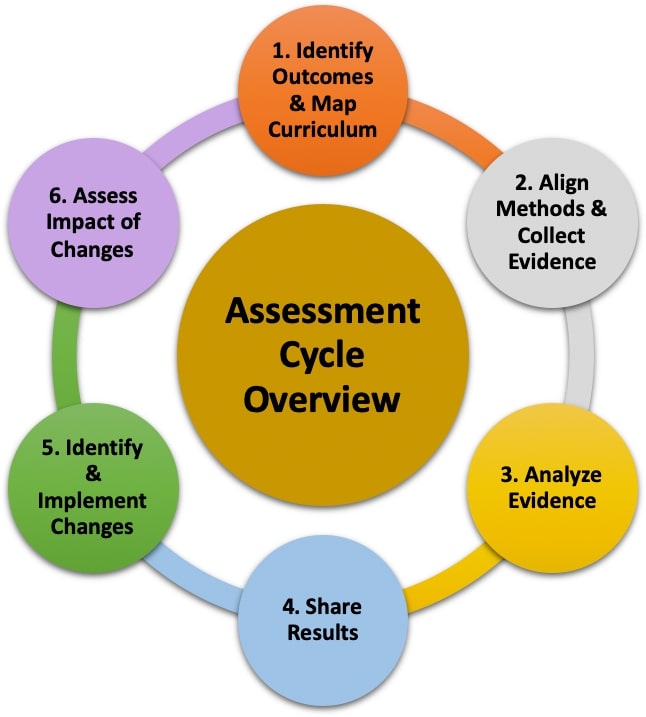Assessment Cycle for Continuous Improvement
The cycle represents the continuous nature of assessing student learning outcomes. Assessment is comprised of several steps. Check on each step below for comprehensive information and resources on each step of the assessment process.

Learning outcomes assessment is a student-oriented and faculty-led practice. It is about determining areas where students are succeeding and where they are struggling in order to seek continuous improvement in teaching and learning. Assessment gives faculty an opportunity to reflect on what happens at the course and program level, based on concrete evidence of student learning. Programs can then make informed decisions about changes intended to improve learning. The resources below give a bird’s-eye view of the process involved in learning outcomes assessment as well as important considerations for faculty to make throughout the assessment loop, from planning to implementing to analyzing assessment results and making changes.
Resources
- Principles of Good Practice for Assessing Student Learning (AAHE)
- Seven Ways of Learning (Davis & Arend)
- Guiding Principles for Assessment of Students' Learning (University of Calgary)
- Unpacking Relationships: Instruction and Student Outcomes (ACE)
- Equity and Assessment: Moving Towards Culturally Responsive Assessment (NILOA)